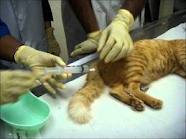
Blocked bladder in male cats
Signs and symptoms of blocked bladders in male cats, emergency treatment of blocked bladders and how to prevent them recurring in the future. Special diets for cats to prevent stones forming again as well as the operation for blocked bladder that removes the penis.
